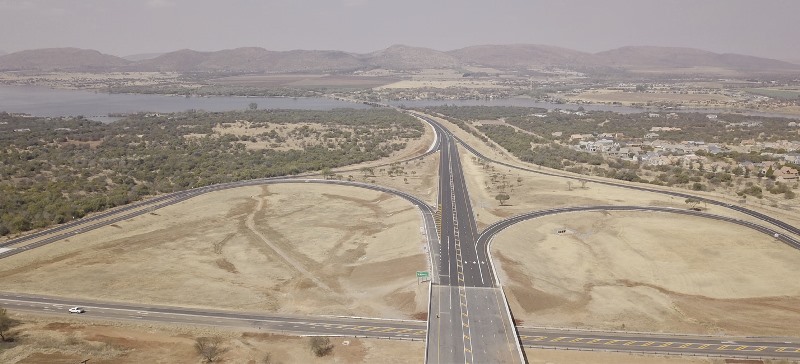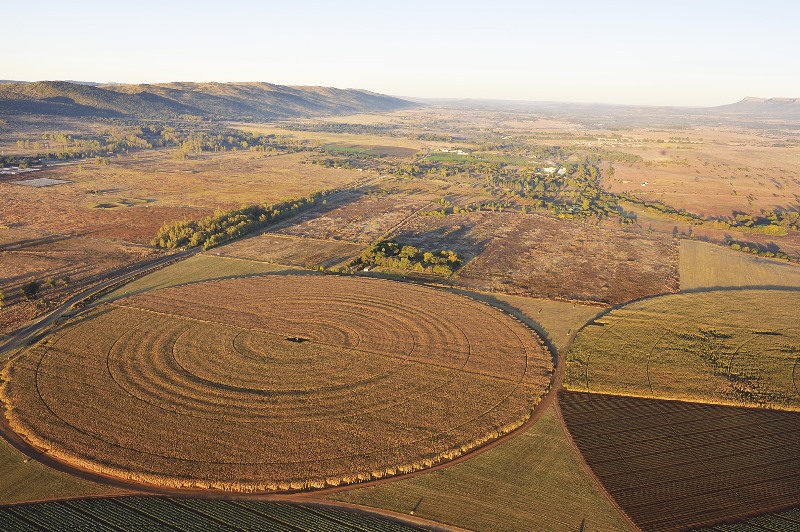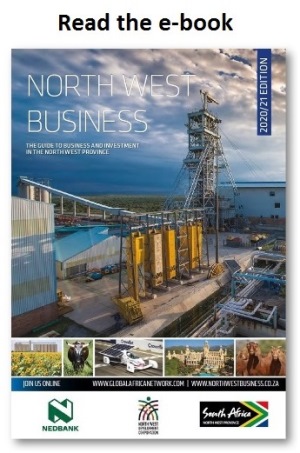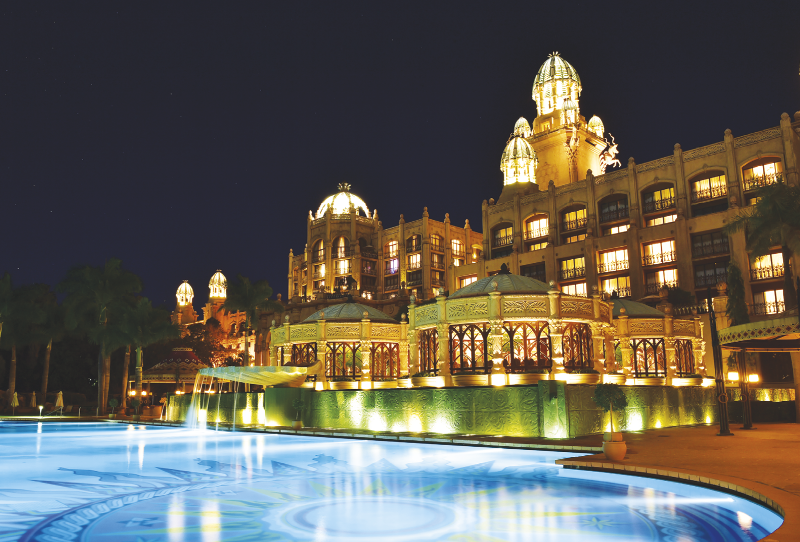Development corridors, a proposed Special Economic Zone (SEZ), industrial parks and agri-parks with differentiated focus areas are among the interventions planned to stimulate the regional economy and create employment opportunities.
The North West Department of Economic Development, Environment, Conservation and Tourism (DEDECT) has committed to entering partnerships with the Automobile Industry Development Council (AIDC) and the Industrial Development Corporation (IDC) to revive industrial parks in the province and create industries that will target niche markets.
The creation of district agri-parks is intended to boost primary production which in turn will increase the amount of raw material that can be processed. Companies making car seats within the province’s active automotive parts sector would be a ready market for treated hides from the huge provincial cattle herd.
The province’s strategic location goes beyond the obvious benefit of its proximity to the province of Gauteng: the major roads linking trade on an east-west axis pass through the province, as does the major railway line which runs from Cape Town in the south to Zimbabwe and beyond in the north. These advantages will be enhanced by four Provincial Strategic Development Corridors, two of which are:
The Eco-Tourism Corridor, Bojanala District. This corridor extends beyond the tourism sector (which includes the Hartbeespoort Dam to Sun City, game lodges and game reserves) and will be supported by the Platinum Valley Special Economic Zone, the automotive industry in the Madibeng area and the mining opportunities that occur throughout the district.
The proposed PVSEZ in the Mogwase Indust-rial Area will be designed to create space for
enterprises which supply the mining industry. Other targeted sectors are capital equipment manufacturing, renewable energy, agro-processing and general manufacturing. Discussions are underway with the National Department of Trade, Industry and Competition (dtic) for the licensing and commissioning of the SEZ.
The N12 corridor in the Dr Kenneth Kaunda District. By promoting residential and commercial activity along this route, it is intended to integrate the economies of the towns of Matlosana and Tlokwe. Private developers are thinking of regional links for their new development in Vryburg, which is at the intersection of the N14 highway (Johannesburg-Upington) and the N18 highway which connects Kimberley to Mahikeng. Twin City Development and Vuno Developments are spending R290-million on the town’s first retail mall, which will serve as a regional attraction. Twin City Development is partnering with the Moolman Group in the construction of the new Rustenburg Mall.
Spatial thinking requires infrastructure to underpin it. In 2020 the North West Department of Public Works and Roads was busy with 13 road construction projects valued at R900-million.

North West Provincial Economy: Overview
Geography and economy
The North West is bordered on the west by the Republic of Botswana and on the east by Gauteng, the engine of the South African economy.
The North West province makes up 6.8% of the population of South Africa (3.6-million), 8.7% of the land mass (105 076 km²) and accounts for 5.8% of economic output in terms of gross value added.
The Vaal River runs along the province’s south-eastern border with the Free State, and the province also shares borders with the Northern Cape to the south and Limpopo in the north.
The mineral reserves in the province are enormous. Platinum group metals (PGMs) predominate but there are significant deposits of gold, uranium, diamonds, copper, vanadium, fluorspar and nickel. Stone and limestone are also found in large quantities. Mining beneficiation takes place at many places, with Rustenburg being particularly strong in this sector. The economy of the town is closely linked to the fortunes of platinum mining, with the sector contributing about 70% of the city’s gross geographic product.
Automotive components firms are clustered in Brits, which in turn is close to the automotive manufacturing hub of Rosslyn (Pretoria) in Gauteng. Towns like Klerksdorp (agro-processing and engineering) and Potchefstroom (food and beverages) also have manufacturing capacity.
The North West is a major producer of maize and sunflower seeds and many other agricultural products. About 20% of South Africa’s maize comes from the province, as does 15% of its wheat. The dry western part of the province is home to beef cattle, game ranching and hunting. The normally well-watered eastern and north-eastern regions carry varied crops, many of which are sold in Johannesburg and Pretoria.

The agricultural sector also generates large-scale storage and logistics operations, particularly in Klerksdorp, Vryburg and Brits, together with a number of agro-processing plants. Senwes is one of the biggest with extensive silo infrastructure while Suidwes has 17 retail outlets and MGK makes full-fat soy at its manufacturing plant. Lichtenburg-based NWK makes liquid fertiliser and animal feed, processes sunflower seeds and runs 37 silos and three grain mills.
The province’s three Technical and Vocational Education and Training (TVET) colleges and the well-respected North-West University all have several campuses catering to a wide range of educational disciplines. The university has a strong reputation as a research institution.
Major towns
The capital city of the North West Province, Mahikeng, lies on the banks of the Molopo River. Situated in the north-west sector of the province near the Botswana border, the city has a strong services sector and a population of approximately 300 000.
The city’s main sectors are financial services, services, transport and trade. The Garona District houses the North West parliament and government buildings. The arts are promoted by the Mmabana Cultural Centre, while the North West Institute of Hotel and Tourism Management is one of three tertiary institutions in the city.
North-West University’s Graduate School of Business and Government Leadership is located in the city, and Unisa has a presence. Other institutions are the Taletso TVET College and the International School of South Africa.
The town is well served by hotels such as the Mmabatho Palms, Hotel and Casino Convention Resort. White rhino and giraffe can be found at the Mahikeng Game Reserve.
The city of Potchefstroom is administered by the Tlokwe Local Municipality. A large campus of North-West University and its business school is located in the city, as is the Vuselela TVET College and the Potchefstroom College of Agriculture. More than 120 000 people regularly attend the annual Aardklop Festival. The city has a population of about 173 000. The sports facilities of North-West University are world class and have been the base for Spain’s soccer team and Australia’s cricket team in world cups. Tlokwe is a hub for the strong commercial agriculture of the region and has several food and beverage manufacturers including Nestlé.
 Some of the bigger enterprises include fertiliser companies such as Kynoch, munitions manufacturers, and food processors like King Food. An army base contributes to the economy, and the airfield formerly used by the military is now run by the municipality.
Some of the bigger enterprises include fertiliser companies such as Kynoch, munitions manufacturers, and food processors like King Food. An army base contributes to the economy, and the airfield formerly used by the military is now run by the municipality.
The N12 Treasure Route passes through the city and holds potential for further development of tourist highlights such as Boskop Dam and the Mooi River on which the town is located.
Rustenburg is a local municipality within the Bojanala Platinum District Municipality and the headquarters of both bodies are in the city of about 625 000 residents.
Rustenburg straddles the N4 “Platinum Highway” about 120 km west of the cities of Pretoria and Johannesburg in the Gauteng Province, the economic hub of South Africa. The N4 stretches across South Africa from Mozambique in the east, to the Botswana border in the west and, as the Trans Kalahari Route, ultimately to Namibia.
At the foot of the Magaliesberg Mountain Range, Rustenburg is only 50 km from one of the country’s premier tourist resorts, Sun City, which in turn is adjacent to the 550 km² Pilanesberg National Park and Game Reserve which has a small airport.
Orbit TVET College has a campus in Rustenburg, Unisa has a regional office and the Agricultural Research Institute’s Industrial Crops Division is also located in the city.
The Royal Bafokeng Sports Palace hosted five group matches in the 2010 World Cup. Platinum mining began in 1929 and has driven the city’s growth ever since.


